
GEOCHEMICAL JOURNAL
Scope & Guideline
Illuminating the Path of Geochemical Research Since 1966
Introduction
Aims and Scopes
- Environmental Geochemistry:
Research examining the chemical composition and processes in environmental systems, including the behavior of pollutants and the geochemical characteristics of natural waters. - Geochemical Analysis Techniques:
Innovative methodologies for analyzing geological materials, including advanced spectroscopic and mass spectrometry techniques to determine elemental and isotopic compositions. - Petrogenesis and Mineralogy:
Studies focused on the formation and evolution of rocks and minerals, including the geochemical characteristics of volcanic and sedimentary rocks. - Biogeochemistry:
Exploration of the interactions between biological and geochemical processes, particularly how organisms influence and are influenced by their geochemical environment. - Isotope Geochemistry:
Research involving the analysis of isotopic compositions to trace geochemical processes and identify sources and sinks of various elements. - Geochemical Modeling:
Development of models to simulate geochemical processes, including diagenesis, mineral weathering, and fluid-rock interactions.
Trending and Emerging
- Climate Change Indicators:
Research focusing on geochemical proxies and indicators related to climate change, such as stable isotopes in marine and terrestrial environments, has gained momentum as scientists seek to understand past and present climate dynamics. - Microbial Geochemistry:
An increasing emphasis on the role of microorganisms in geochemical processes, including bioremediation and nutrient cycling, highlights the intersection of biology and geochemistry. - Geochemical Responses to Anthropogenic Activities:
Studies investigating the impacts of human activities on natural geochemical cycles, such as pollution and resource extraction, are on the rise, reflecting growing environmental concerns. - Advanced Analytical Techniques:
The adoption of cutting-edge analytical techniques, including high-resolution mass spectrometry and synchrotron-based methods, is trending, allowing for more precise and detailed geochemical analyses. - Ecosystem Geochemistry:
Research exploring the geochemical interactions within ecosystems and their responses to environmental changes is emerging, indicating a holistic approach to studying geochemical processes.
Declining or Waning
- Traditional Geochemical Mapping:
Research focused on basic geochemical mapping techniques has declined as more advanced and integrated approaches, such as remote sensing and geospatial analysis, have gained prominence. - Static Geochemical Analysis:
There is a noticeable decrease in studies that rely on traditional static measurements of geochemical properties, as dynamic and real-time analysis methods are increasingly favored. - Classic Mineralogy Studies:
Papers solely focused on classical mineralogy without integrating geochemical or environmental contexts are becoming less common, as interdisciplinary approaches are emphasized. - Geochemical Studies of Stable Environments:
Research that investigates geochemical processes in relatively stable environments (e.g., ancient rocks) has waned, possibly due to a growing interest in dynamic and anthropogenically impacted systems. - Historical Geochemistry:
The focus on historical geochemical studies, such as those examining ancient geochemical environments without contemporary relevance, appears to be diminishing compared to studies with immediate environmental implications.
Similar Journals
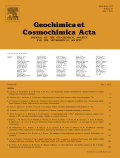
GEOCHIMICA ET COSMOCHIMICA ACTA
Driving Innovation in Earth and Planetary SciencesGEOCHIMICA ET COSMOCHIMICA ACTA is a premier journal dedicated to advancing the fields of geochemistry and petrology, published by Pergamon-Elsevier Science Ltd. With its ISSN 0016-7037 and E-ISSN 1872-9533, this esteemed journal has been at the forefront of scientific inquiry since its inception in 1950, with a strong commitment to disseminating high-quality research through 2024. Its reputation is underscored by an impressive impact factor and a ranking of #8 out of 154 in Earth and Planetary Sciences according to Scopus, placing it in the 95th percentile of its category. GEOCHIMICA ET COSMOCHIMICA ACTA serves as a critical resource for researchers, professionals, and students alike, offering insights into the complex interactions of geological and cosmological processes. While the journal is not open access, it remains a vital conduit for innovative research, fostering the scientific community’s understanding of earth materials and their significance.

Mineralogical Journal-Ukraine
Pioneering insights into energy and fuel technology.Mineralogical Journal-Ukraine is a key academic publication dedicated to advancing the field of mineralogy and geochemistry, under the esteemed auspices of the M.P. Semenenko Institute of Geochemistry, Mineralogy & Ore Formation of NAS Ukraine. Since its inception in 2019, this journal has established itself as an essential resource for researchers and professionals engaged in the study of energy, fuel technology, and the earth sciences, despite its present rankings reflecting a developing impact within these specific categories on Scopus. Published in Ukrainian and available in both print and online formats, the journal not only aims to disseminate high-quality research but also encourages inclusive access to vital findings in mineral exploration, petrology, and geochemical processes. With a commitment to excellence and an expanding scope of research, Mineralogical Journal-Ukraine stands as a pivotal platform for innovation and collaboration among scientists striving to understand the complexities of mineral formation and ore deposits.
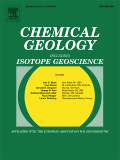
CHEMICAL GEOLOGY
Connecting Theory and Practice in Earth SciencesChemical Geology is an esteemed international journal published by Elsevier, dedicated to the rigorous exploration of geochemistry and petrology, with its foundational roots tracing back to 1966. As evidenced by its impressive Q1 ranking in both Geochemistry and Petrology as well as Geology in the 2023 category quartiles, this journal stands as a premier outlet for cutting-edge research and innovative methodologies within these vital fields. With a Scopus rank placing it in the top 10% of Earth and Planetary Sciences, Chemical Geology offers a platform for researchers, professionals, and students alike to disseminate findings that advance our understanding of geological processes and materials. Although it does not currently offer open-access options, the journal remains committed to high-quality publications that contribute significantly to the scholarly community. Located in the vibrant academic milieu of Amsterdam, Netherlands, Chemical Geology is an essential resource for those engaged in the earth sciences, aiming to bridge theoretical insights with practical applications.

Geochemical Perspectives Letters
Advancing knowledge in Earth Sciences, one letter at a time.Geochemical Perspectives Letters, published by the European Association of Geochemistry, is a leading open-access journal that has been at the forefront of geochemical research since its inception in 2015. Based in France, this journal is dedicated to disseminating high-quality, original research and reviews across the fields of Environmental Chemistry, Geochemistry, and Petrology, and Geology. With an impressive Q1 ranking in multiple categories, and notable Scopus rankings placing it among the top-tier journals in Earth Sciences, Geochemical Perspectives Letters aims to foster scientific dialogue and collaboration among researchers and professionals. Its open-access model ensures widespread dissemination of knowledge, making it accessible to a diverse audience, including students and seasoned experts alike. As the journal continues to converge research insights from 2015 to 2024, it remains a pivotal resource for those striving to understand and address the complexities of our planet's geochemical processes.
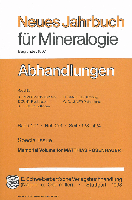
NEUES JAHRBUCH FUR MINERALOGIE-ABHANDLUNGEN
Documenting the evolution of mineralogical research.NEUES JAHRBUCH FUR MINERALOGIE-ABHANDLUNGEN, published by E Schweizerbart'sche Verlagsbuchhandlung in Germany, is a distinguished scholarly journal dedicated to advancing the fields of mineralogy and petrology. With an ISSN of 0077-7757, it provides a platform for researchers to disseminate high-quality findings that contribute to our understanding of Earth sciences. Although it currently has no open access options, the journal remains vital for professionals seeking to engage with impactful research in geochemistry and petrology, as reflected in its 2023 Scopus ranking in the 21st percentile within its category. The journal has documented significant research from 1980 to 1988 and resumed from 1996 to 2023, making it a crucial archive for historical and contemporary studies. Despite its current Q4 quartile ranking, NEUES JAHRBUCH FUR MINERALOGIE-ABHANDLUNGEN is an important contributor to the academic discourse in its field, and it invites researchers, professionals, and students alike to explore and submit their work that drives innovation and understanding in mineralogical studies.

GEOLOGY OF ORE DEPOSITS
Bridging Theory and Practice in Economic GeologyGEOLOGY OF ORE DEPOSITS, published by PLEIADES PUBLISHING INC, stands as a pivotal resource in the fields of Economic Geology, Geochemistry, and Petrology. With an ISSN of 1075-7015 and an E-ISSN of 1555-6476, this esteemed journal caters to researchers and professionals by publishing rigorous studies on the formation, distribution, and exploration of mineral deposits. Although it operates under a subscription model, the journal offers insights that are vital for advancing knowledge in geological sciences. As represented in the Scopus rankings, it holds respectable positions within its categories—ranked Q3 in Economic Geology, Geochemistry and Petrology, and Geology for 2023, reflecting its significant contribution to the academic discourse. Covering a comprehensive timeframe from 1996 to 2024, it appeals not only to seasoned scholars but also to students seeking to deepen their understanding of ore deposit geology, thus fostering a rich learning environment and enhancing the field's scientific foundation.

LITHOLOGY AND MINERAL RESOURCES
Illuminating the Path from Lithology to Resource StewardshipLITHOLOGY AND MINERAL RESOURCES, published by PLEIADES PUBLISHING INC, is a specialized journal dedicated to advancing knowledge in the fields of economic geology, geochemistry, and petrology. With its ISSN 0024-4902 and E-ISSN 1608-3229, this journal has established itself as a critical resource for scholars and practitioners alike, examining the intricate relationships between lithology and mineral deposits, and their implications for resource management. As indicated by its positioning in the Q3 quartile for both economic geology and geochemistry and petrology in 2023, the journal is recognized for its valuable contributions to the scientific community, ranking #28 out of 43 in Economic Geology and #112 out of 154 in Geochemistry and Petrology according to Scopus. The journal's publication history reveals a rich tradition of excellence, as it has been continuously contributing to the field from 1984 to 2024. While it does not offer open access options, researchers and practitioners can easily engage with its robust body of work in effective ways to support their own studies and applications. The importance of LITHOLOGY AND MINERAL RESOURCES lies in its commitment to publishing high-quality research that informs practices in mineral exploration and environmental stewardship, making it an essential resource for anyone invested in the future of earth sciences.
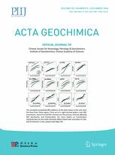
Acta Geochimica
Pioneering Research in the Chemical Composition of Our World.Acta Geochimica is a prominent academic journal published by SPRINGER INT PUBL AG, focusing on the dynamic fields of Geochemistry and Petrology. Established in 2016, this peer-reviewed publication has quickly gained recognition within the scientific community, currently holding a category quartile ranking of Q3 in Geochemistry and Petrology as of 2023. With its ISSN 2096-0956 and E-ISSN 2365-7499, the journal offers a platform for researchers and professionals to disseminate and discuss significant advancements in the study of the chemical composition of the Earth and other celestial bodies. While it is not an open-access journal, Acta Geochimica plays a vital role in fostering collaboration and innovation among scientists, contributing to a deeper understanding of geochemical processes. Located in Switzerland at Gewerbestrasse 11, Cham CH-6330, Switzerland, this journal is a critical resource for students, researchers, and professionals seeking to push the boundaries of knowledge in Earth sciences.

AMERICAN MINERALOGIST
Delivering Excellence in Mineralogical ResearchAMERICAN MINERALOGIST, published by the Mineralogical Society of America, stands as a premier journal in the fields of geochemistry and petrology, as well as geophysics, characterized by its prestigious Q1 ranking in both disciplines in 2023. As a vital resource for researchers, professionals, and students, the journal presents cutting-edge research, comprehensive reviews, and innovative methodologies in mineralogy and allied earth sciences. With converged publication years extending from 1968 to the present, it highlights significant advancements and breakthroughs within the realm of mineralogy. The journal's rigorous peer-review process ensures high-quality content that is both informative and impactful, making it essential reading for anyone engaged in earth sciences. Though it does not offer open access, the journal remains widely accessible through academic libraries, providing users with a wealth of knowledge to advance their understanding of mineralogical sciences.
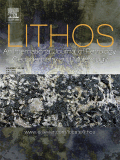
LITHOS
Unveiling Earth's Secrets through Rigorous Scholarship.LITHOS is a prestigious academic journal published by Elsevier, renowned for its contributions to the fields of Geochemistry and Petrology. As an integral platform since 1968, this journal focuses on advancing the understanding of the Earth's composition and processes, adhering to the highest academic standards as evidenced by its Q1 ranking in both Geochemistry and Petrology, and Geology. With an impressive impact factor and substantial visibility in scientific databases, LITHOS caters to a broad audience, including researchers and students eager to engage with cutting-edge studies. Although it is not an open-access journal, its scholarly rigor and relevance have established it as a leading resource for the latest findings and methodologies in Earth sciences. Notably, it ranks #41 in Earth and Planetary Sciences: Geology and #34 in Geochemistry and Petrology, demonstrating its significant influence within the academic community. The journal is based in the Netherlands and continuously opens avenues for innovative research through its commitment to excellence in the geosciences.